Warming Winds, Rising Tides: Unstable Weather
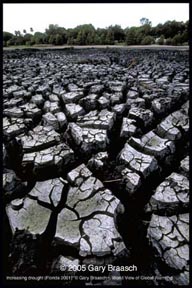
A warming atmosphere and ocean make for a great deal of extra energy available for the creation of weather. Around the world, recent data show an increase in severity of storms, droughts, rainfall, and floods.
The disastrous hurricane season of 2005 was just one indication of how synergistic weather is with sea level rise, loss of wetlands, social issues, and the ability of governments to respond. Three storms strengthened to category 5 in the Atlantic Basin for the first time in a single season (Katrina, Rita, and Wilma). An unprecedented 27 named tropical storms formed, according to NOAA, and more than half of them became hurricanes.
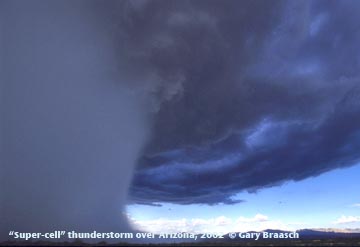
2005 equaled 1998 as warmest year ever recorded. NOAA reported: "Mean temperatures through the end of November were warmer than average in all but three states. No state was cooler than average. A July heat wave ... broke more than 200 daily records established in six western states." "The heat wave spread across the country during late July, scorching the East and prompted record electricity usage in New England and New York."
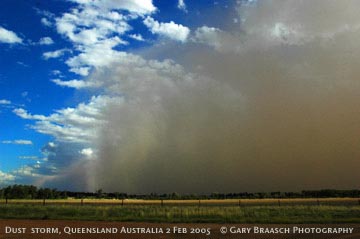
"Drier-than-average conditions contributed to an active wildfire season that burned more than 8.5 million acres in 2005.... This exceeds the old record set in 2000 for acreage burned in a wildfire season for the U.S. as a whole. At the end of November, 18 percent of the contiguous U.S. was in moderate-to-extreme drought ... in contrast to 6 percent at the end of November last year." Worldwide, "significant weather and climate events for the globe included: severe drought in parts of southern Africa and the Greater Horn of Africa, extreme monsoon-related rainfall in western India including a 24-hour rainfall total of 37.1 inches in Mumbai, the worst drought in decades in the Amazon River basin, severe drought in large parts of western Europe, and a record warm year in Australia." For details please link to http://www.ncdc.noaa.gov/oa/climate/research/2005/ann/ann05.html
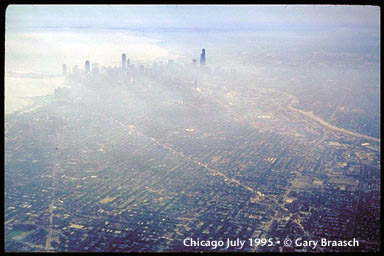
Heat is a particularly insidious killer, especially in urban centers heavily populated by the poor and elderly. Heat kills many more people than do other weather disasters such as tornados, even in the United States. The worst local US heat wave killed more than 730 people in Chicago in July 1995. Unfortunately it was far exceeded by the European heat wave of August 2003, which claimed at least 35,000 lives. France alone, which suffered through two weeks with readings as high as 104 F (40 C), lost nearly 15,000. As Janet Larsen of the Environmental Policy Institute wrote, this is 19 times the world death toll from SARS.
A study of long term European temperatures, published in Science in March 2004 showed that 2003 was the hottest summer in 500 years, part of a trend that is not expected to abate. Jonathan Patz and colleagues wrote in Nature in 2005 that this has already contributed to increased morbidity and mortality in many regions of the world. They warned of increasing effects in temperate latitudes and sprawling cities, where the majority of humans live now.

Weather disasters, perhaps now less often "Acts of God,"
are increasing. Insurance companies paid out a record $145 billion
on weather disasters in 2004, according to the clearinghouse Munich
Re, compared to $65 billion the year before and $36 billion in
2001. This reflects primarily the number of people at risk in
storm-prone areas like coasts and the increasing value of their
property. Instability in the atmosphere may also increase the
number of rapid changes and "inclement" weather, illustrated
by these photos of Prospect Park, Brooklyn New York: Daffodils
bloom on a 70 degree day in April 2000 (roll mouse over to see
change), but the next day they are buried in 4 inches of snow.
Meteorologists already see an increase in severity of storms, rainfall, and floods (this aerial of Gurnee Illinois was made after abnormal rains in the spring of 2004). These anomalies from what we think is "normal" are expected to continue around the world.
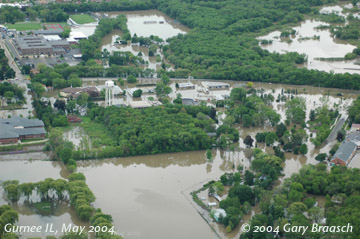
COPYRIGHT NOTICE:
Photography and text Copyright © 2005 - 2017 (and before) Gary Braasch All rights reserved. Use of photographs in any manner without permission is prohibited by US copyright law. Photography is available for license to publications and other uses. Please contact requestinformation@worldviewofglobalwarming.org. View more of Gary Braasch's photography here.


